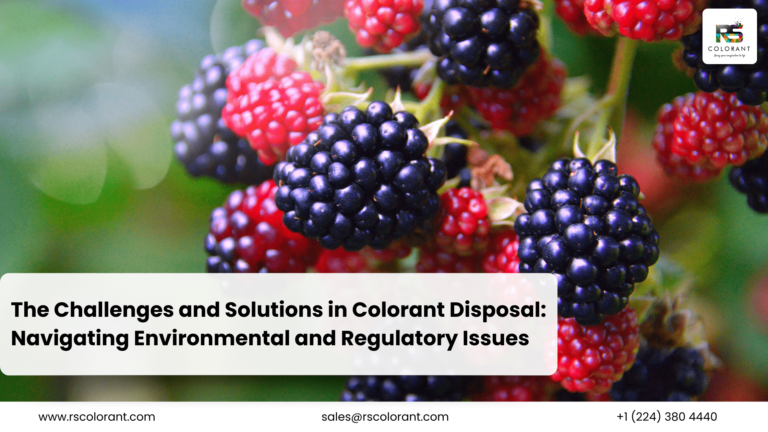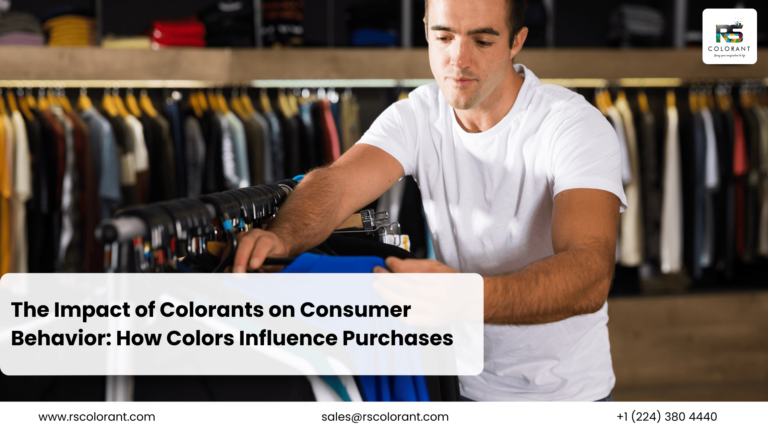Psychological Effects of Colorants – Outline
- Introduction
- Importance of color in product selection
- Overview of psychological impact
- Understanding Color Psychology
- Definition and significance
- Historical perspective
- The Science Behind Color Perception
- How humans perceive color
- Influence of light and environment
- Color and Emotional Response
- Connection between color and emotions
- Examples of emotional triggers
- Color in Marketing and Branding
- Role of color in brand identity
- Case studies of successful color use
- Color Preferences Across Different Demographics
- Age-related color preferences
- Gender-based color preferences
- Cultural Influences on Color Perception
- Variations in color meanings
- Examples from different cultures
- Color in Product Packaging
- Importance of packaging color
- Impact on consumer behavior
- The Role of Color in Online Shopping
- Color use in e-commerce
- Influence on click-through rates and conversions
- Color in Food and Beverage Industry
- How color affects taste perception
- Examples from food marketing
- Color and Apparel Selection
- Color trends in fashion
- Psychological impact on clothing choices
- Case Studies: Successful Use of Color
- Iconic brands and their color strategies
- Lessons learned
- Potential Pitfalls of Color Use
- Misinterpretations and negative effects
- Avoiding common mistakes
- Future Trends in Color Psychology
- Emerging research and trends
- Predictions for future product designs
- Conclusion
- Summary of key points
- Final thoughts on the importance of color in product selection
- FAQs
- How does color influence buying decisions?
- What colors are most effective for marketing?
- Can the color of a product impact its perceived value?
- How do cultural differences affect color perception?
- What are the latest trends in color psychology?
The Psychological Effects of Colorants on Product Selection
Introduction
Ever noticed how a vibrant red dress catches your eye or how a soothing blue package makes you feel calm? That’s not a coincidence. Colors play a crucial role in our daily lives, often influencing our decisions without us even realizing it. When it comes to product selection, the psychological impact of colorants is profound. From the hues on packaging to the tones in advertising, color can sway our choices and shape our perceptions.
Understanding Color Psychology
So, what exactly is color psychology? In simple terms, it’s the study of how colors affect human behavior and emotions. This field of study delves into how different colors can evoke specific feelings and reactions. Historically, colors have been associated with various cultural and emotional meanings, influencing everything from ancient rituals to modern marketing strategies.
The Science Behind Color Perception
Ever wondered why a sunset looks more vibrant in real life than in a photo? It’s all about how we perceive color. Human eyes detect color through light receptors called cones. The environment and lighting conditions can alter how we see these colors. For instance, a bright yellow might look dull in low light but can pop under the midday sun. This variability is crucial for marketers to understand when designing product packaging and advertisements.
Color and Emotional Response
Colors and emotions are intertwined. For instance, red often evokes excitement and urgency, which is why it’s frequently used in clearance sales. Blue, on the other hand, tends to be calming and trustworthy, making it a popular choice for financial institutions. These emotional triggers can significantly impact consumer behavior, driving them towards or away from a product.
Color in Marketing and Branding
Think about some of the most iconic brands—Coca-Cola, Tiffany & Co., McDonald’s. What do they have in common? Distinctive color schemes. Color is a cornerstone of brand identity, helping to create a memorable and recognizable image. For example, the red and yellow of McDonald’s are not just eye-catching but also associated with feelings of happiness and energy, aligning perfectly with the brand’s family-friendly image.
Color Preferences Across Different Demographics
Age and gender can significantly influence color preferences. Younger individuals might prefer brighter, more vibrant colors, while older adults might lean towards muted tones. Gender also plays a role—studies show that women generally prefer softer colors like purples and pastels, whereas men might favor bolder colors like blue and black. Marketers often leverage these preferences to tailor products to specific demographics.
Cultural Influences on Color Perception
Color meanings can vary dramatically across cultures. In Western societies, white is often associated with purity and weddings, whereas in some Eastern cultures, it’s linked to mourning. Red symbolizes luck and prosperity in China but can indicate danger or caution in other contexts. Understanding these cultural nuances is vital for global brands to avoid potential missteps.
Color in Product Packaging
Packaging color isn’t just about aesthetics—it’s a powerful marketing tool. Bright and bold packaging can attract attention and convey excitement, while muted tones might suggest elegance and sophistication. The right color choice can enhance shelf appeal and influence purchasing decisions. For instance, eco-friendly products often use greens and browns to emphasize their natural and sustainable qualities.
The Role of Color in Online Shopping
In the digital age, color continues to play a pivotal role in e-commerce. Website color schemes can affect user experience and conversion rates. For example, a red “Buy Now” button can create a sense of urgency, encouraging immediate action. Additionally, color consistency across a brand’s online presence can strengthen brand recognition and trust.
Color in Food and Beverage Industry
Did you know that the color of food can affect its perceived taste? A study showed that participants rated drinks as sweeter when served in pink containers compared to those in clear ones. Food marketers often use vibrant colors to make products look fresher and more appealing. Think of the bright red of ripe strawberries or the golden yellow of a banana.
Color and Apparel Selection
Fashion is another industry where color plays a key role. Seasonal color trends can drive sales and influence consumer behavior. For instance, warm colors like reds and oranges are popular in fall, while pastels dominate spring collections. The psychological impact of clothing colors also affects personal expression and social perceptions.
Case Studies: Successful Use of Color
Consider brands like Apple and Nike. Apple’s use of sleek, minimalist colors reinforces its image of modernity and sophistication. Nike’s bold and dynamic color choices align with its sporty, energetic brand identity. These case studies highlight how strategic color use can enhance brand messaging and consumer engagement.
Potential Pitfalls of Color Use
However, the use of color isn’t without its challenges. Misinterpreting cultural meanings or overusing certain colors can backfire. For example, using too much red can overwhelm and even deter consumers. It’s essential for brands to test and research their color choices thoroughly to avoid common pitfalls.
Future Trends in Color Psychology
As research in color psychology advances, new trends are emerging. For instance, there’s a growing interest in how colors can impact mental health and well-being. Future product designs might incorporate colors that promote relaxation and stress relief. Additionally, the rise of personalized marketing could lead to more tailored color strategies based on individual preferences.
Conclusion
In the world of product selection, color is more than just a visual element—it’s a psychological powerhouse. From influencing emotions and perceptions to driving consumer behavior, the impact of colorants is undeniable. As brands continue to explore and leverage the psychological effects of color, understanding these dynamics will be crucial for success in an increasingly competitive market.
FAQs
How does color influence buying decisions?
Color influences buying decisions by triggering emotional responses and associations. For example, red can create a sense of urgency, prompting quick purchases, while blue can evoke trust and reliability, encouraging long-term customer loyalty.
What colors are most effective for marketing?
The effectiveness of colors in marketing depends on the context and target audience. Generally, red, blue, and green are popular choices. Red attracts attention and creates urgency, blue builds trust, and green is associated with health and eco-friendliness.
Can the color of a product impact its perceived value?
Yes, the color of a product can significantly impact its perceived value. Premium colors like gold, black, and silver can give an impression of luxury and higher value, while bright, bold colors might suggest affordability and fun.
How do cultural differences affect color perception?
Cultural differences can greatly affect color perception. For instance, white is associated with purity in Western cultures but can signify mourning in some Asian cultures. Brands need to consider these variations to ensure their color choices resonate with diverse audiences.
What are the latest trends in color psychology?
Current trends in color psychology include a focus on wellness and mental health, with colors like soft greens and blues gaining popularity for their calming effects. There’s also an increasing emphasis on personalized color experiences tailored to individual preferences and moods.




